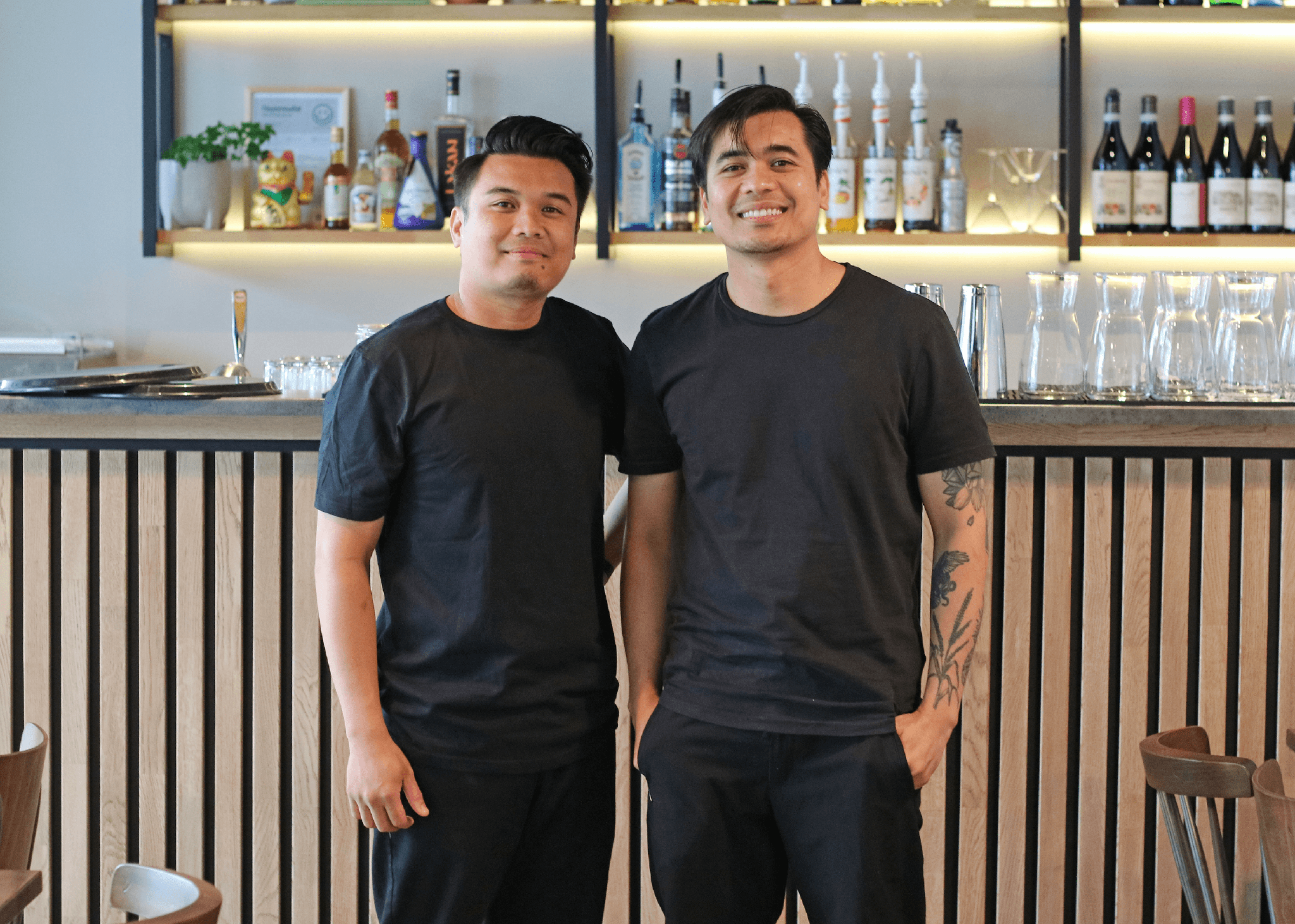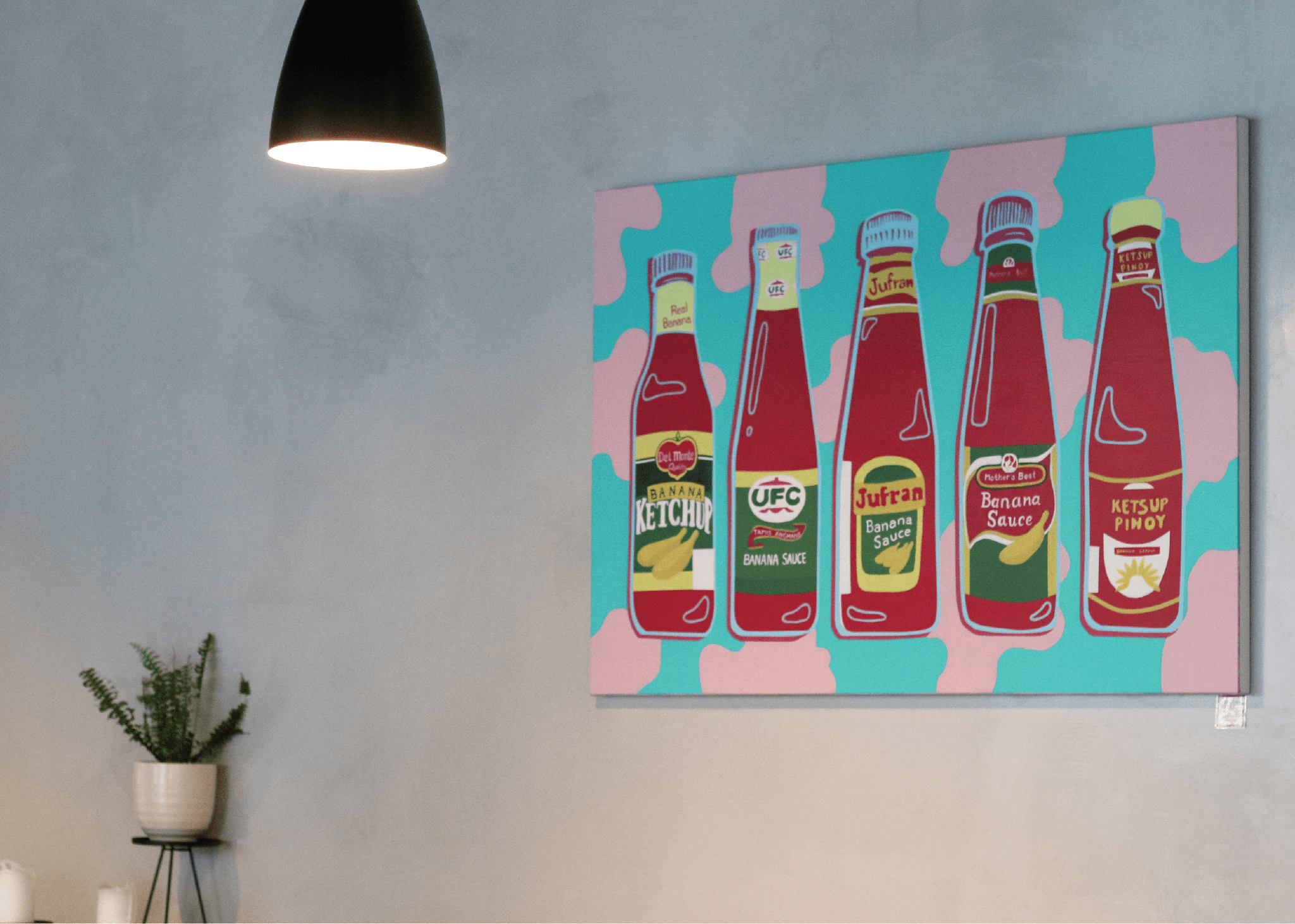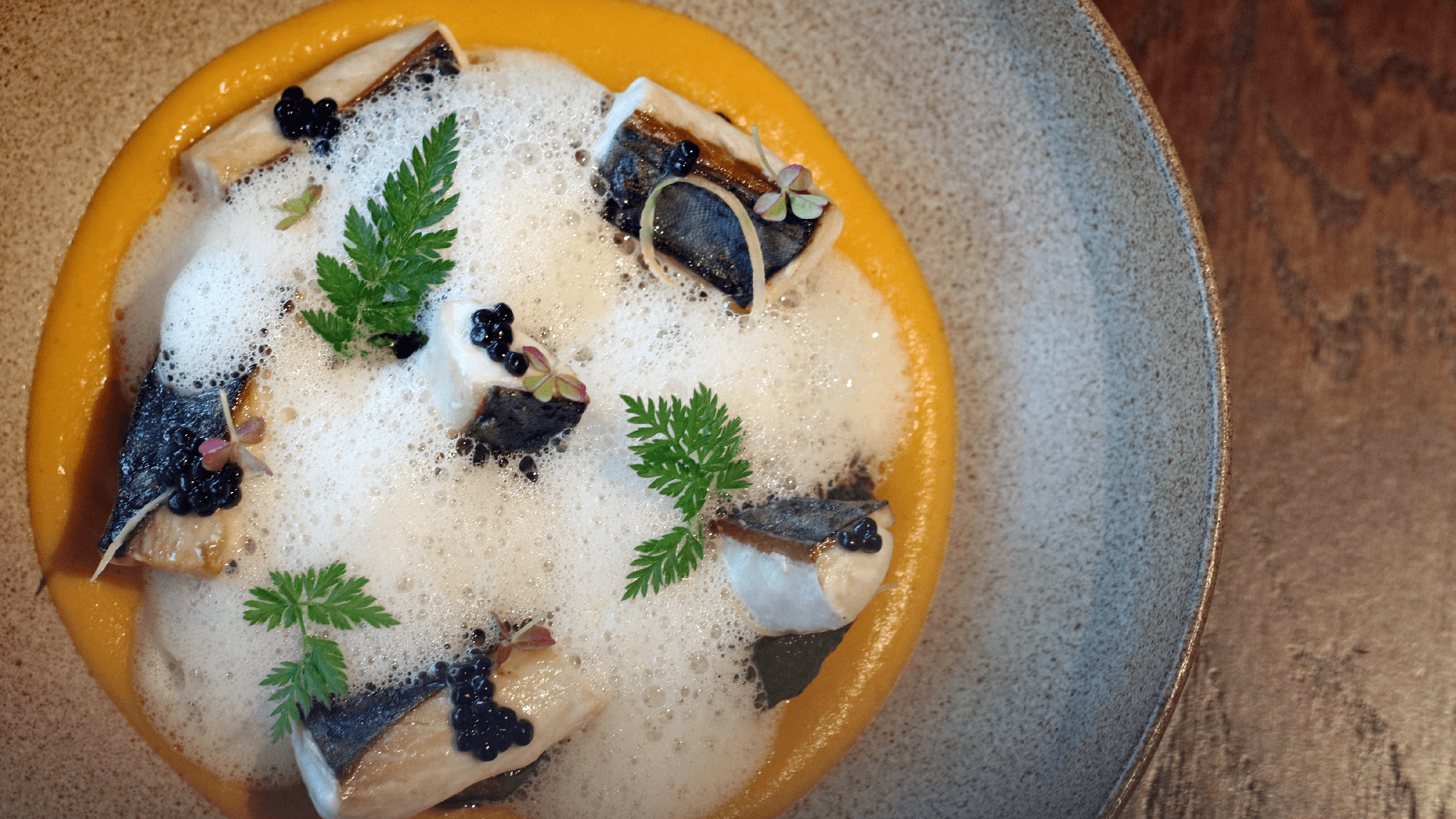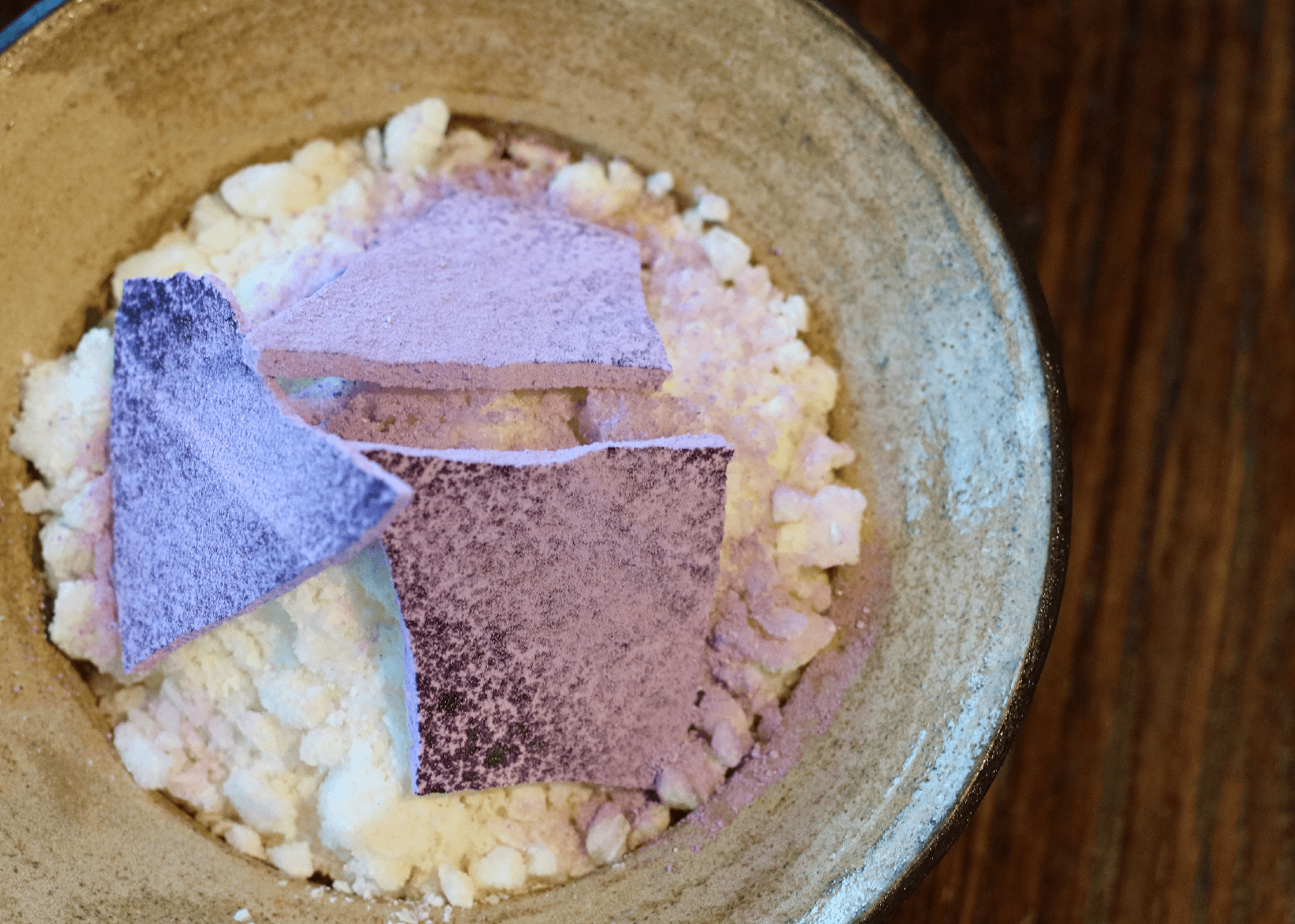Filipino New Nordic
The Norwegian rockfish, raw and hours from life, appears under a mosaic of radishes cut to the translucence of sea glass. Flying fish roe, pickled mango and dill drift here and there like bright-colored creatures in a tidal pool. At the table, the arrangement is anointed in a coulis green as new leaves.
Presented in an austere Oslo dining room, the dish could fit into any New Nordic restaurant in the Norwegian capital — but the first bite reveals its roots. This is unmistakably Filipino kinilaw, the marine vibrance of the rockfish framed in acidity and richness. Pre-colonial Filipinos achieved this equilibrium with naturally fermented vinegar and grated fruits like tabon-tabon or coconut. At Kain Neo-Filipino Bistro, brothers Dominic and Daniel Vergara alchemize the same results with the ingredients available at a higher latitude.

“Our main goal is to share Filipino culture through food, using Norwegian produce and Filipino flavors,” says Daniel, 35. “That’s kind of our thing.” He and Dominic, 31, opened Kain — the only Filipino restaurant in Oslo — in 2022, after just five years in the city. The restaurant is a syncretization of their memories of Pampanga, their childhoods in Italy and their rigorous training around Europe and Asia. It is also, in my opinion, one of the best Filipino restaurants in Europe.
Born in the Philippines, the Vergara brothers grew up in Milan, home to one of the largest Filipino populations in Europe. Their parents ran the restaurant Cabalen Ini, a now-closed hub for the community that hosted frequent birthday parties, beauty pageants and debuts. Both brothers helped out in the restaurant, and Dominic later attended culinary school and worked in Michelin-starred restaurants including Innocenti Evasioni in Milan and Madonnina del Pescatore in Senigallia.
Daniel, meanwhile, worked his way through various positions in Milan’s restaurant scene, eventually traveling to Yokohama, Japan to learn how to make ramen. Some friends in Oslo suggested that he look for a job in the Norwegian city, where frigid winters and a widespread interest in Japanese culture bolster a thriving ramen scene. After the crush and bustle of Milan and Yokohama, Oslo felt like an oasis of calm. He invited his brother, then working in similarly hectic London, to join him.

With his star-studded CV, Dominic had little trouble getting an internship at Maaemo, the three-Michelin-starred restaurant that proved Oslo could stand on its own in a New Nordic scene dominated by Copenhagen and Stockholm. Soon after his internship, the brothers opened their first business, Kain Rice Bar, at Oslo Street Food, a hip food hall in a former bathhouse. There they decorated their stall in bamboo to look like a provincial tindahan and served carinderia-style fare like tapsilog, pork adobo and chicken inasal. Their high-end training eked through in details like the onions pickled in-house and sous vide eggs on the arroz caldo.
“But what we were doing there was limited,” Daniel says. “We wanted to expand.”

Their current restaurant space, a few blocks away from the food hall, became available just as their term at the stall was ending. It’s a high-traffic location in the center of town, the kind of spot that would normally be difficult to rent as young, first-time restaurateurs — but the brothers had an ally. “The broker was eating at Oslo Street Food all the time, and he’s like, I know these guys,” says Dominic, laughing. “So he convinced the landlord.”
Kain Neo-Filipino Bistro gives the brothers enough space to put their skills on full display. The ginataan — made with Norwegian mackerel on the day of my visit — involves coconut foam, caviar-like spheres of herring, and pumpkin pureed with coconut to the texture of pastry cream. Foams and cold-oil spherification are cliches of modernist cuisine, but this may be the first restaurant to deploy them to painstakingly recreate the flavors of Filipino home cooking. The dish so closely evoked my own lola’s ginataang isda that I called over the server and asked her to explain every ingredient to me, searching for a secret.

“We’re using modern techniques to do our stuff just to make it more presentable,” Dominic says. “Filipino food is really good. It’s delicious. But to be honest, it’s sometimes not that pretty. So that’s what we try to achieve.”
Not everyone agrees with their methods. Daniel described a Filipino guest who said the ginataan wasn’t authentic because it didn’t have visible pieces of kalabasa. “But we’re like, ginataan means to cook in coconut, and isn’t this cooked in coconut?” he says. “We just want people to be open minded about what they’re having, even if it’s not what they’re used to having. Just enjoy the moment.”

A moment at Kain is best enjoyed with a coda of what the menu calls “neo halo-halo.” When the dessert arrived — three slate-like shards of ube meringue on a scree of buttermilk granita — I doubted that this minimalist composition could bear any resemblance to the carnivalesque cacophony I associate with halo-halo. But a stir unearthed leche flan, bananas cooked down to caramel and buoyant cubes of nata de coco. I almost laughed when I recognized its inspiration: the halo-halo at Razon’s, the Pampangueño chain with dozens of locations around the Philippines.
“What we’re doing here is mainly our childhood memories: the memories of the things my mom is cooking, of things we tried in the Philippines,” Dominic explains. “That’s what we want to share.”
A version of this article appeared in Positively Filipino magazine and in Roots & Wings magazine.
Add a comment
0 Comments Add a Comment?